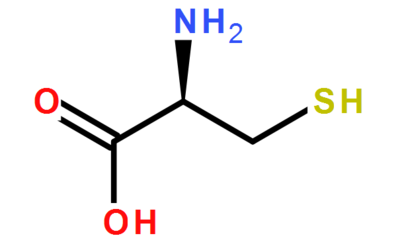b

Thank You!
Your requirement has been sent, we will contact you quickly!
Sent Failed!
Try again!

Summary:
L-Cysteine is a kind of nonessential amino acid, which exists in keratin.
Keratin is the main protein of nails, toenails, skin and hair. The relationship between L-cysteine and cystine is very
close. Two molecules of L-cysteine form one molecule of cystine. L-Cysteine is more unstable. It is easy to become
cystine which can also be reduced to L-cysteine. Both of them are sulfur-containing amino acids, which have effects
on skin formation and detoxification.
Applications:
L-Cysteine is mainly used in cosmetics, medicine and food. In cosmetics, it is used to prepare perm, sunscreen,
hair perfume and hair essence. In the field of medicine, it is used to prepare methyl cysteine, ethyl cysteine, acetylcysteine, methyl cysteine, ethyl cysteine and comprehensive amino acid preparations. L-Cysteine can also be used
as a protective drug against radiation injury. In food, L-cysteine is used as bread fermentation auxiliary (ripening
agent), antioxidant stabilizer for milk powder and fruit juice, and nutrient for pet animal food.

